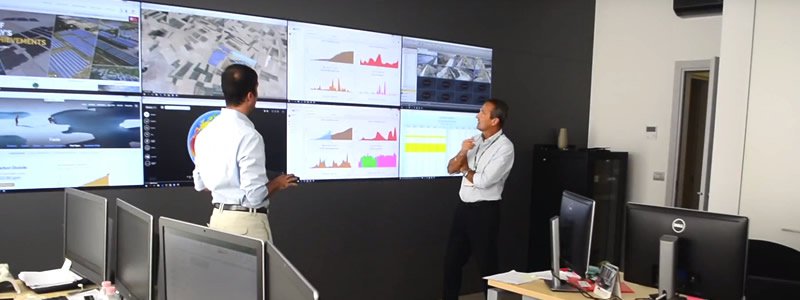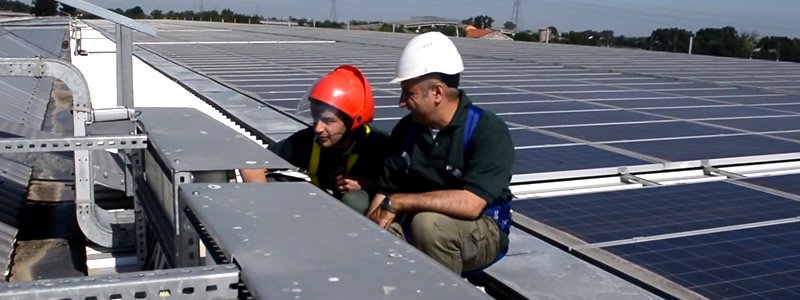
PV operations and maintenance is no longer just about keeping plants going. It’s increasingly about continuously improving performance.
Solar asset owners need performance-related key performance indicators (KPIs) as operations and maintenance (O&M) shifts away from a pure cost-reduction focus, an expert says. Performance-related KPIs would help asset owners achieve improved returns on their plants even with O&M costs at an all-time low, says Luca Tosi, sales director at Enerray, which provides technical services for 740 MW of PV generation worldwide.

“One of the issues we are facing every time we are taking over a plant, as an O&M contractor, is that the market currently has no standardization of performance KPIs,” he says.
This lack of standards is resulting in higher costs for the industry as service providers such as Enerray are often forced to spend money on assessing the condition of a plant as part of contract handover. “The information we get from the asset owner or that is given by the previous O&M contractor is often not accurate and not reliable,” Tosi says. “Data is not reliable most of the time.”
Typically, more than half of the asset owners have inaccurate data, he says, with the problem being particularly prevalent in the secondary market. Because of this, Enerray has developed a standard methodology which the company now applies to assess the condition of every new plant it takes on.
The methodology, which includes thermal scanning and random panel checks, relies on the fact that most PV plants have common components and points of failure. Enerray has also created an internal role, that of performance specialist, dedicated to maintaining and improving performance-related KPIs.

Being able to benchmark plant performance at the outset of a contract is becoming more and more important in the face of dwindling scope for further O&M cost reductions. Recent years have seen significant decreases in the cost of O&M, sparking concern that any further falls may compromise service quality.
At the same time, as government support for solar is declining in many mature markets, there is a growing need for asset managers to improve the return on their O&M investment rather than simply cutting costs. “The only way is to be sure of what we are doing,” says Tosi. “We make more detailed site visits to be more confident about the situation we are going to see when we start the operation of the plant.”
The upfront checks help avoid situations where the O&M contractor uncovers a problem after papers have been signed. Tosi says that in today’s performance-oriented market it is more useful to work with an asset owner on resolving major issues than to sweep them under the carpet.
Even so, the cost of O&M could be reduced by having an industry-standard view of KPIs, including availability, performance ratio and energy output. “Of these, the only one that is 100% reliable is energy output,” Tosi says.
Performance ratios, especially, suffer from significant calculation issues, he says. And while energy output remains the most important measure from a revenue perspective, because this is closely linked to irradiation it does not in itself provide much useful information upon which to improve performance.
“It cannot be the only value used to measure the performance of the O&M contractor,” confirms Tosi.

Availability measurements often provide a better way to gauge O&M provider performance, he says. Enerray now regularly signs contracts with service levels, based on availability as well as energy output, with an upside for the service provider whenever there is an improvement in revenues.
Another level of KPIs, for example relating to fault response or resolution times, is important but can be relegated to internal KPI scorecards within service providers working towards performance-enhancing goals, says Tosi. “They are more important for us than for investors,” he says.
One example of how a performance improvement approach created dividends for an asset owner involves an Enerray client that was having production issues on a plant in southern Italy. The output from the AC side of the plant was 30% lower than that of the DC system. This had an impact on revenues.
Under a lowest-cost O&M contract, the problem would have fallen outside Enerray’s scope, but because of the company’s performance improvement focus it took on the job of working with the client to establish the cause of the fault. After six months, Enerray proved there was a problem with the off-taker’s meter, helping restore profitability for the plant owner where previous suppliers had failed.
Aware of some of these challenges, the European PV industry body SolarPower Europe is taking steps to improve standardisation of KPIs. In June 2016, a special SolarPower Europe Task Force launched its first version of O&M Best Practice Guidelines, which covered issues such as how to measure availability, performance ratios and energy output.
“The Task Force has identified shortcomings in the operations field where standardization is less present,” acknowledges the report.
Today, says Tosi: “The situation is improving, but of course it would be great to have further standardisation.”

About Enerray
Enerray S.p.A., founded in 2007, is an Italian company leader in the design, installation, development and management of utility scale and industrial photovoltaic systems.
As a company part of the Maccaferri Industrial Group, an industrial corporation founded in 1879, with a global presence, 58 factories and a turnover of 1,27 billion dollars, Enerray provides turnkey solutions for industrial roofing, on-ground installations, shelters and greenhouses, competing as a reliable partner, that can guarantee the best performance and function of the plants.
Enerray’s EPC and O&M services are based on a well established and continuously growing experience, acquired on various plants and on an overall power of 800 MWp installed and under construction, and more than 700 MWp under maintenance worldwide.
Enerray's top clients are important Groups like Ferrari, Max Mara, Auchan, Leroy Merlin, Ghella, Cinépolis, Manifatture Sigaro Toscano, Iresen, Mutti, Amaro Montenegro, Edison.
In line with the international culture of the entire Maccaferri Industrial Group, Enerray is present on international markets, constantly looking for new opportunities of growth and development, since 2011.
Enerray owns subsidiaries in Argentina, Brazil, Cameroon, Chile, Costa Rica, Iran, Jordan, Mexico, Morocco, Romania, Saudi Arabia, Thailand, Turkey and UAE, but is active and develops markets in other countries in the Americas, Africa and Asia.
